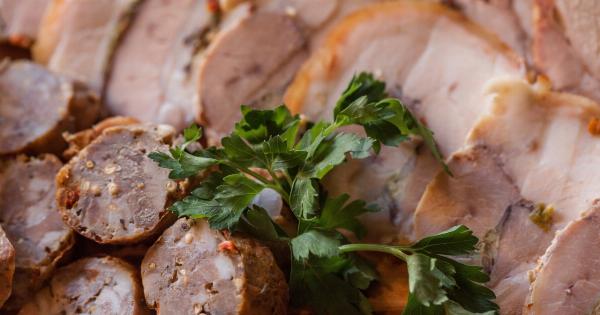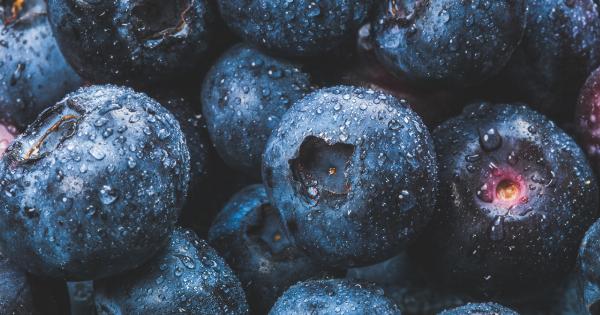When it comes to sausages, there is more than meets the eye. These delicious meat treats have a rich history and are enjoyed in various forms around the world. From traditional bratwursts to gourmet artisanal sausages, there is something for everyone.
In this article, we will uncover the secrets behind sausages and reveal what you need to know about these versatile culinary wonders.
1. The Origin of Sausages
Sausages have been a part of human cuisine for thousands of years. The roots of sausages can be traced back to ancient civilizations such as the Sumerians, Egyptians, and Chinese.
These early sausages were made by stuffing ground meat, fat, and spices into animal intestines or stomachs, which acted as natural casings.
2. Types of Sausages.
Sausages come in various types and flavors, each with its unique characteristics. Some popular types include:.
- Bratwurst: A traditional German sausage made from pork, beef, or veal.
- Chorizo: A spicy Spanish or Mexican sausage typically made from pork or beef.
- Andouille: A smoked sausage originated in France but widely used in Cajun and Creole cuisines.
- Kielbasa: A Polish sausage made from pork, beef, or a combination of both.
3. Making Sausages
Making sausages is an art form that requires skill and precision. The process starts with selecting high-quality meats and spices. The meat is then ground and mixed with desired seasonings.
Some sausages may also include additional ingredients like vegetables, cheese, or even fruits.
Once the filling is prepared, it is stuffed into casings. Natural casings, made from animal intestines, are still popular today for their authentic texture and flavor. However, synthetic casings made from collagen or cellulose are also commonly used.
4. Cooking and Serving
Sausages can be cooked in various ways, including grilling, frying, baking, or steaming. The cooking method depends on the type and desired flavor.
For example, bratwursts are often grilled to perfection, while sausages used in stews or casseroles are typically simmered or baked.
Sausages are incredibly versatile and can be enjoyed in numerous dishes. From hot dogs and sandwiches to pasta sauces and breakfast skillets, sausages add a burst of flavors to any meal.
5. Regional Variations
Every region has its unique sausage traditions. For example:.
- German sausages are known for their hearty flavors and are often served with sauerkraut and mustard.
- Italian sausages, like spicy or sweet varieties, are popular in pasta dishes and pizzas.
- Middle Eastern sausages, such as Merguez, are made with a blend of lamb or beef and spices like cumin and paprika.
- American sausages, such as hot dogs and breakfast sausages, have become iconic in their own right.
6. Sausage Preservation
Before the advent of refrigeration, sausages were made as a preservation method for meat. The process of smoking and drying allowed sausages to be kept for an extended period.
Today, while refrigeration is readily available, smoked and dried sausages still hold a special place in culinary traditions worldwide.
7. Artisanal and Gourmet Sausages
In recent years, there has been a surge in artisanal and gourmet sausage production. Skilled butchers and chefs experiment with unique flavor combinations and high-quality ingredients to create exceptional sausages.
These sausages often showcase local and sustainable ingredients, elevating the culinary experience.
8. Gluten-Free and Healthier Options
For individuals with dietary restrictions, gluten-free sausages are now widely available. Additionally, many sausages are made with leaner cuts of meat, reducing the fat content while still delivering a delicious taste.
9. Cultural Significance
Sausages are not just a food item; they hold cultural significance in many societies.
Whether it’s the Oktoberfest celebrations in Germany or the various sausage festivals held worldwide, sausages bring people together to celebrate food and tradition.
10. Sausages and Beyond
Sausages have gone beyond their traditional forms. Vegetarian and vegan sausages made from plant-based ingredients are now popular alternatives for those seeking meat-free options.
These sausages are crafted to mimic the flavors and textures of traditional sausages while catering to specific dietary choices.
Conclusion
Sausages are perhaps one of the most beloved food items that have stood the test of time. With their diverse flavors, cooking methods, and cultural significance, sausages continue to capture the hearts and taste buds of people around the world.































